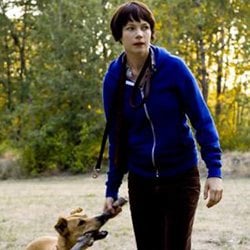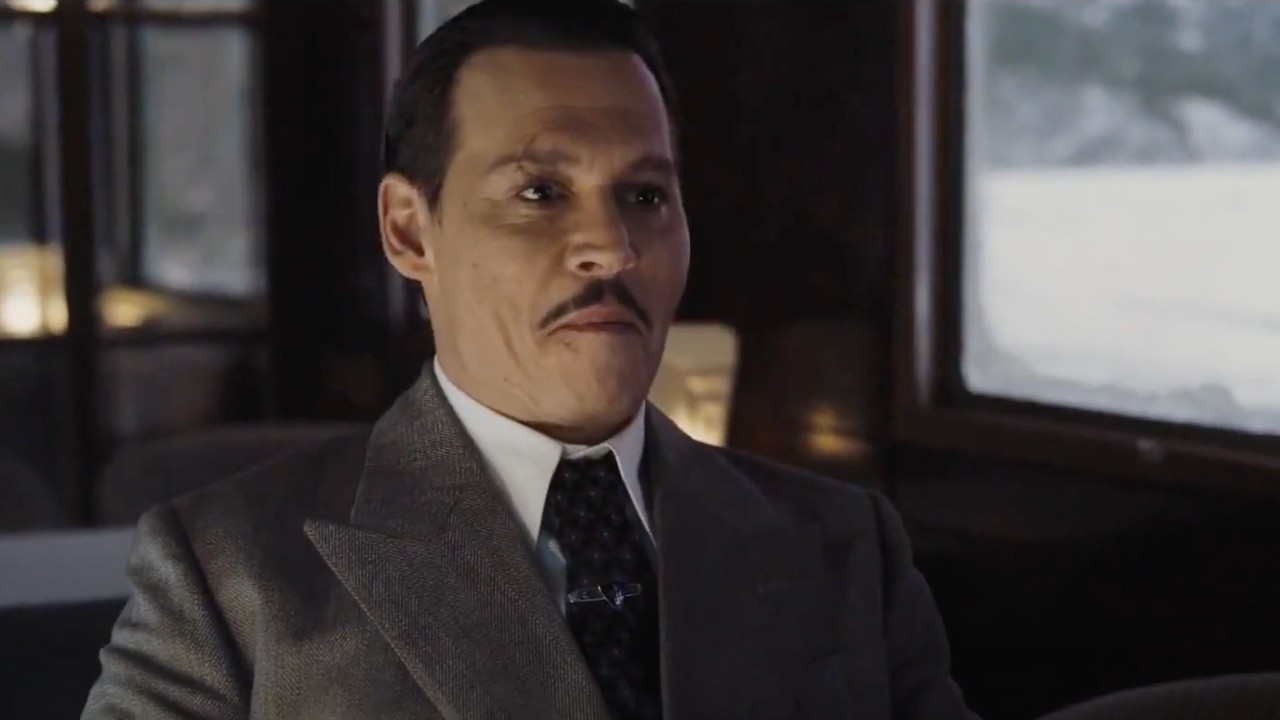NYFF Exclusive Interview: Kelly Reichardt

Kelly Reichardt's movies are what independent film used to mean, before Miramax ate up that section of the industry and a movie made for $50 million could still be called independent. Her last film, the critically revered Old Joy cost only $30,000 to shoot; while you could argue that her latest, Wendy and Lucy, has gone "big budget" by comparison, $300,000 is still peanuts by virtually any standard.
It's even more impressive given that her star is Michelle Williams, an actress more than capable of drawing Hollywood salaries. Reichardt said in an exclusive interview that Williams showed no trace of a Hollywood pedigree on the set: "We didn't have any fancy stuff for her-- she was just sitting on an apple box on the side of the road. It's almost like she was part of the crew." And even though the shoot took place in Portland, Oregon, with no streets blocked off or even any indoor scenes, Williams was never recognized-- except once. "Actually, there was one little girl outside the grocery store whose father came back and asked for an autograph. But it was a complete non-issue."
Read below for my exclusive interview with Reichardt, talking about the process of making the smallest of the small independent films, telling a story about the tarnished American dream, and making a road movie that fits perfectly into the financial crisis. Wendy and Lucy, which is currently screening at the New York Film Festival, opens December 10; read my rave review here. How is it different having your film at the New York Festival from other festivals you've been to?
I don't know how all these festivals, what the leverage of them all is. But we showed the film at the Ziegfield, which was really super sweet. It's a beautiful place. That was different.
This is coming so soon after Old Joy, but before that film it had been 11 years since your last feature. Is this just a particularly productive period, or did you just find two stories you wanted to tell at the same time?
I have made both these films with the same writer, John Raymond. And we have another project we want to do. Yeah, definitely working with him has spurred an excitement in me to make films again. Also after River of Grass, my first feature, I took a breath and never got a film together again. When the opportunity came, I realized I had to catch the wave from Old Joy. Old Joy did well enough that I could get the small amount of money I needed to make this movie. At this age, having had so many down years in-between, I can't really snooze. And I feel so invigorated.
is is important to you to work with the low budget, and outside the constraints of the film industry?
Your Daily Blend of Entertainment News
I don't feel like I'm a part of the film industry really at all, because I have these two producers, and only one of them, [Neil] Kopp is on set with me. The apparatus is just super-small. It's done very much in private. It's more sort of like a group of people. It's not that it's casual, because it's really a lot of work. Nobody's watching dailies with me. I cut for six months with this film-- nobody's rushing me. I have my friends look at it and get feedback from them, but there's just no interference at all.
But you also have a lot of constraints with such a small budget. What are those challenges? FIrst of all, what was the budget?
Wendy and Lucy was $300,000 total, and Old Joy was shot for $30,000. So yeah, there's a lot of constraints. In Old Joy, I felt like the constraints worked for the movie. But in this case it was really hard. Time is the main thing. You just don't have any time. John Raymond writes our ideas as stories, which gives them depth and detail and an interior life. The limits are being built into the idea from the beginning, so it's not like you come with an idea and you're cramming it into this. The stories are small. It's all very minimalist, and that's sort of my aesthetic, and it works for me. I just want enough people that we can all talk to each other. Old Joy was six people total. On Wendy and Lucy, 10 people was at the high end. Just that it's still small enough that it's manageable.
How do you manage the production when it's filming in a town, where people are going about their lives?
We don't. We leave it all open. Try to keep the apparatus small enough that it's not glaring that you're shooting a movie. But everything's open, and whatever happens in the frame, happens in the frame. Nothing closed for us; we can't afford it.
How does that work when you're working with Michelle Williams, who is more well-known than other actors you've worked with before?
I have to say, more people recognized Will Oldham, when I made making Old Joy, than recognized Michelle. I never saw her get recognized the entire shoot. And it might be harder now than it was when we shot. I think because of the way she dresses, and who she is, and we didn't have any fancy stuff for her-- she was just sitting on an apple box on the side of the road. It's almost like she was part of the crew. We kept thinking it would be an issue. Actually, there was one little girl outside the grocery store whose father came back and asked for an autograph. But it was a complete non-issue. And we always talked about Wendy being invisible, and Michelle was really into the idea that, while she was there, she was invisible.
Why was it important to show her interactions with the drifter kids who camp out by the railroad in contrast to what Wendy's doing?
Well I thought that the parallels of the Depression time and now, and just the aesthetic of that, was kind of powerful. I think there's a lot of examples in the film of different kinds of people who are choosing to live off the grid, and in what's that are really, really fragile.
Do you think of this as being part of the long line of American road trip movies?
I guess I more think of the economy, and the politics of now in the divide between the upper class and the lower class, and how vast that is. It all seemed reminiscent of Depression times in America. They were just the beginning conversations that we had, which we just started writing after Katrina. We were kind of asking ourselves about, hypothetically, how does one improve their station in life if you don't have anything? That was sort of the seed of the idea. The idea of going West, the old tradition of going West to improve your lot, and that's where your fortune could lie, that seemed to fit in with the train, bringing in the romantic stories of America and how those butted up against realities.
Staff Writer at CinemaBlend

